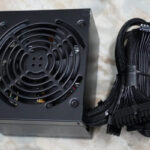Disinfectants are used to clean up areas in hospitals and other such places. They can be used on both hard surfaces as well as upholstery. The following points list all the benefits of using them:
Effective in killing microorganisms
An antibacterial, antifungal and antiviral hospital-grade disinfectant effectively kills microorganisms on hard surfaces. They are also used to clean upholstery and other textiles.
Many products are available, including those based on alcohols, phenols or quaternary ammonium compounds that kill bacteria by disrupting their cell walls. Bleach (sodium hypochlorite) is an oxidising agent that destroys pathogens by breaking down their cell membranes but does not affect some bacterial spores.
Other agents include hydrogen peroxide-based products, which use a chemical reaction to produce water vapour from oxygen molecules; this vapour can then kill many germs in its path through the atmosphere of your home.
It is non-flammable.
Medical disinfectants are non-flammable chemicals that do not ignite or burn quickly. The safety of medical disinfectants is a crucial consideration when choosing a product for your healthcare facility.
Bacteria cannot develop a resistance to it.
One of the many benefits of using a hospital-grade disinfectant is that it is highly effective at killing bacteria, including those that cause MRSA and staph infections. When a person comes into contact with an antibiotic-resistant strain of bacteria, however, there is a risk that the bacteria will develop a resistance to the medication and become immune to its effects.
While this does not often happen, when it does occur, it can be very dangerous for patients who need antibiotics for their recovery from serious illnesses or injuries. Medical professionals take great care in prescribing these medications only after determining whether or not you may be at risk for developing an infection caused by drug-resistant strains of bacteria; however, if you have already been diagnosed with such an infection, there are still steps that you can take before visiting your doctor’s office so as not to spread the disease further while waiting for treatment options!
Another benefit of using medical disinfectants instead of alcohol or hydrogen peroxide is that they won’t harm people whose skin has been damaged due to burns.
It can be used in the presence of blood or other bodily fluids
As a healthcare worker, you know the importance of disinfecting surfaces and equipment after exposure to potentially infectious materials. It is very important that you can adequately clean up blood and other bodily fluids (OPIM) so that they don’t pose a risk to others.
Several options are available to clean up OPIM: surface cleaning wipes, sprays, or gels. Each method has its own benefits and drawbacks that make it useful in different situations. However, no matter which method you choose, it is essential that the equipment used on these surfaces be disinfected first before being used again for patient care purposes. This ensures that any germs left behind from previous patients are killed off so that no new infections can spread through them again!
Disinfectants are suitable for both hard surfaces and upholstery.
Disinfectants are ideal for hard surfaces and upholstery, as they can be used in blood or other bodily fluids. Some disinfectants are even safe to use on food preparation surfaces. Whether you have pets or are concerned about spreading disease, a disinfectant will help keep your home clean and hygienic.
Conclusion
There are many benefits of using medical disinfectants. They are non-toxic, kill bacteria and other microorganisms in hard surfaces and upholstery, and can be used in blood or other bodily fluids. They are suitable for hard surfaces and upholstery and can even be used on patients who have suffered from an infection.



